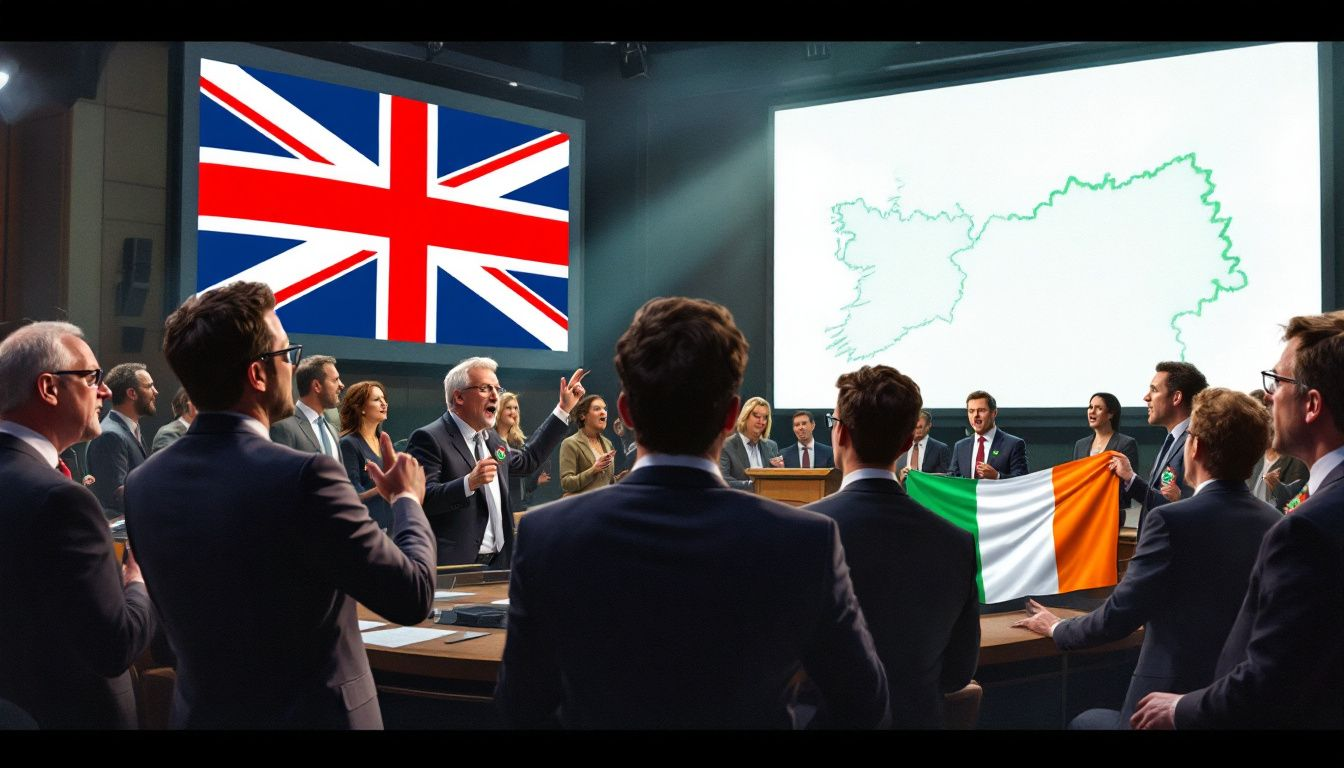When comparing Northern Ireland vs Ireland, it’s vital to understand their key differences. Northern Ireland, part of the United Kingdom, and the Republic of Ireland, a sovereign nation, differ in their political systems, cultural identities, economies, and travel regulations. This article explores these distinctions to help you grasp the complexities of both regions.
Key Takeaways
Northern Ireland operates under a devolved government system within the UK, while the Republic of Ireland functions as a parliamentary constitutional republic.
Cultural and linguistic differences are prominent between the two regions, with Northern Ireland primarily recognizing English and the Republic also promoting Irish, reflecting each area’s unique identities.
Economic disparities exist, particularly in currency usage and post-Brexit trade challenges, with Northern Ireland using Pound Sterling and the Republic adopting the Euro.
Political Structures
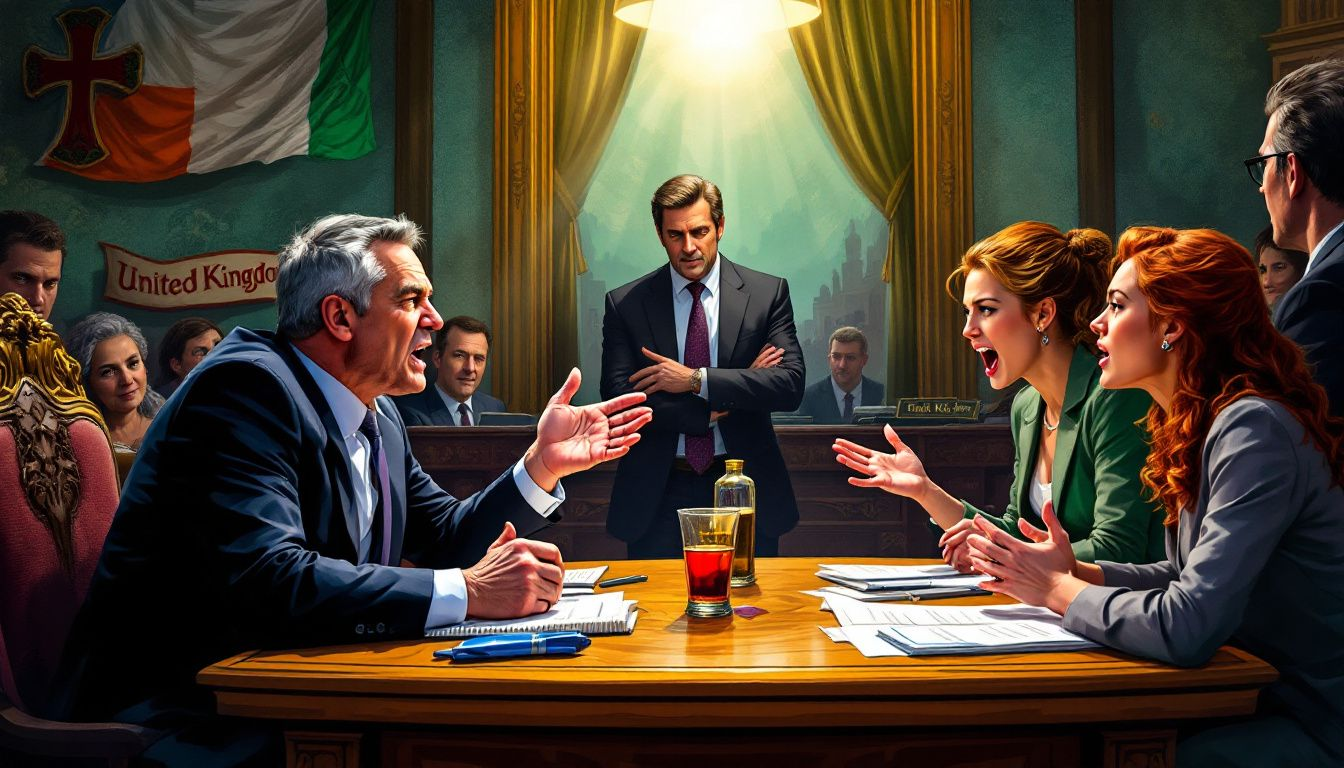
The political landscape of Northern Ireland and the Republic of Ireland is a testament to their divergent histories and contemporary realities. Northern Ireland’s political system operates under a multi-tier government system within the United Kingdom, including local councils and representation in the UK Parliament, which is influenced by the british government. This structure enables substantial local decision-making through its devolved government.
Conversely, the Republic of Ireland is a sovereign nation that functions as a parliamentary constitutional republic, with a president and a prime minister steering its national parliament.
This political divide has roots in the early 20th century when the partition of Ireland in 1921 created two self-governing entities: Northern Ireland and Southern Ireland. This partition was a response to ongoing violence and unrest, and while it was intended as a temporary measure, it set the stage for the political systems we see today.
Understanding these political structures is vital for grasping the broader context of Irish politics and the nationalist majorities that influence governance in these regions.
Devolved Government in Northern Ireland
Northern Ireland’s devolved government, established under the Belfast Agreement in 1998, is central to its local governance. The Northern Ireland Assembly, often referred to as Stormont, is responsible for regional matters such as health, education, and justice. This assembly includes representatives from various parties, reflecting the region’s diverse political landscape. The Northern Ireland Executive, comprising a First Minister, deputy First Minister, and other ministers, oversees the executive authority. Senior civil servants in Northern Ireland oversee daily operations when local ministers are not present. This ensures continuity in governance and administration.
The Good Friday Agreement, a cornerstone of Northern Ireland’s governance, was ratified by referendums in both Northern Ireland and the Republic of Ireland, signaling widespread support for peace and cooperation. This agreement aimed to address the conflicts of The Troubles by establishing a power-sharing government that reflects both nationalist and unionist communities.
The Northern Ireland Assembly’s role underscores the region’s complex political identity and efforts to maintain peace and stability.
Parliamentary Republic in Ireland
The Republic of Ireland’s political system is characterized by its status as a parliamentary constitutional republic. The president serves as the head of state, embodying the nation’s unity and continuity. Meanwhile, the Taoiseach, the prime minister, leads the executive branch and is responsible for day-to-day governance. This structure ensures a balance of power and a clear delineation of roles within the government.
As a sovereign country, the Republic of Ireland operates independently of the United Kingdom, with its own national parliament and executive authority. This independence was solidified through a series of historical events, including the Anglo-Irish Treaty and the subsequent establishment of the Irish Free State.
Today, the Republic of Ireland’s political system reflects its journey towards sovereignty and its commitment to democratic governance.
Cultural and Linguistic Differences
Cultural and linguistic differences between Northern Ireland and the Republic of Ireland are profound, shaped by centuries of history and diverse influences. These differences are reflected in everything from language usage to religious practices, contributing to the rich tapestry that defines each region’s identity.
Symbols such as the Red Hand of Ulster, the harp, and the Irish tricolour flag play significant roles in expressing national identity and fostering a sense of belonging. National holidays like St. Patrick’s Day are celebrated in both regions, though customs may vary, including those of the Irish and Ulster Scots.
Appreciating these cultural nuances reveals the distinct identities within the island of Ireland.
Language Usage
Language is a crucial aspect of identity in both Northern Ireland and the Republic of Ireland. English is the primary language spoken in both regions, facilitating communication and daily interactions. However, the Republic of Ireland officially recognizes both Irish and English, with Irish holding significant cultural importance. This bilingual approach is evident in road signage, which features both languages.
In Northern Ireland, efforts to promote the Irish language have gained momentum, with Irish language schools and community initiatives aimed at preserving and revitalizing its use. Despite these efforts, road signs in Northern Ireland remain solely in English, reflecting the region’s different linguistic policies.
These language dynamics emphasize the cultural preservation efforts and the significance of linguistic heritage in both regions.
Religious Influences
Religion plays a pivotal role in shaping the cultural and societal landscapes of Northern Ireland and the Republic of Ireland. The Republic of Ireland is predominantly Catholic, with the Catholic Church influencing various aspects of life, including education and holidays. This religious majority has historically contributed to a strong sense of national identity and cultural cohesion.
In contrast, Northern Ireland has a Protestant majority, which has significantly influenced its political and social structures. The partition of Ireland created a Catholic minority in Northern Ireland, affecting community relations and cultural identities.
This religious divide has been a source of tension and conflict, but it also underscores the diverse cultural fabric that defines the region. Appreciating these religious influences reveals the complexities of Northern Ireland’s and the Republic of Ireland’s cultural identities.
Economic Distinctions
The economic landscapes of Northern Ireland and the Republic of Ireland are shaped by their distinct political and historical contexts. The Republic of Ireland, with its dynamic economy, is known for major industries such as technology, finance, pharmaceuticals, tourism, and professional services. Dublin, the capital, serves as a hub for international businesses and startups, driving economic growth and innovation.
Northern Ireland, while part of the UK, faces unique economic challenges and opportunities, especially in the post-Brexit era. The political divide between these regions influences economic policies, trade relations, and investment flows, highlighting the importance of understanding their economic distinctions.
Currency: Euro vs Pound Sterling
One of the most noticeable economic differences between Northern Ireland and the Republic of Ireland is the currency used. Northern Ireland uses Pound Sterling, aligning it with the United Kingdom’s monetary system. This affects everything from pricing to financial transactions, creating a distinct economic environment.
In contrast, the Republic of Ireland uses the Euro, integrating it with the broader European Union economy. The currency distinction has important effects on trade and investment. It also influences the exchange rates between the two regions. Businesses operating across the border must navigate these differences, impacting pricing strategies and financial planning.
Impact of Brexit on Trade
Brexit has introduced new complexities to the economic relationship between Northern Ireland and the Republic of Ireland. The re-emergence of trade barriers and regulatory challenges poses significant risks to the previously seamless cross-border economic activities. The Common Travel Area still allows free movement, but uncertainties about future regulatory environments persist.
Small businesses, in particular, face increased costs and delays due to changes in tariffs and regulatory checks. The potential for stricter border controls also raises concerns about the impact on tourism and the overall economic stability of Northern Ireland.
The Northern Ireland Protocol aims to mitigate these issues by aligning Northern Ireland with some EU regulations, but ongoing disagreements between the UK and the EU continue to create uncertainty.
Geographic and Demographic Features
The geographic and demographic features of Northern Ireland and the Republic of Ireland offer a fascinating comparison. Northern Ireland, with a smaller land area and population, consists of six counties: Antrim, Armagh, Tyrone, Fermanagh, Down, and Derry. The Republic of Ireland, encompassing a larger area, includes 26 counties.
The size and population distribution of these regions offer insight into their unique characteristics and how they shape the lives of their inhabitants.
The capitals, Belfast and Dublin, further exemplify these differences, each serving as cultural and economic centers in their respective regions.
Size and Population
Northern Ireland has a land area of 5,460 acres and a population of approximately 1.8 million people. Its population density is 179 people per square mile, indicating a relatively sparse population compared to the Republic of Ireland. The six counties of Northern Ireland contribute to its unique regional identity and demographic distribution.
In contrast, the Republic of Ireland covers an area of about 1,000 square miles and has a population of around 4.5 million. The higher population density of 344 persons per square mile reflects its larger and more densely populated landscape. These geographic and demographic differences shape the economic and social dynamics of each region.
Capitals: Belfast vs Dublin

Belfast, the capital of Northern Ireland, is a city rich in history and cultural significance. With a population of approximately 483,418, it stands as the largest city in Northern Ireland. Belfast is home to notable landmarks such as Titanic Belfast, Cavehill, and Belfast City Hall, which attract tourists and highlight the city’s historical heritage. The city also serves as a hub for technology, life sciences, and manufacturing industries, contributing to its economic vitality.
Dublin, the capital of the Republic of Ireland, boasts a population of about 1.4 million, making it the largest city in the country. Known for its vibrant cultural scene, Dublin features significant historical sites like St. Patrick’s Cathedral, Dublin Castle, and Trinity College. As a financial and tech hub, Dublin hosts many international companies and startups, driving innovation and economic growth.
The characteristics of Belfast and Dublin highlight the diverse identities and economic landscapes of Northern Ireland and the Republic of Ireland.
Historical Context
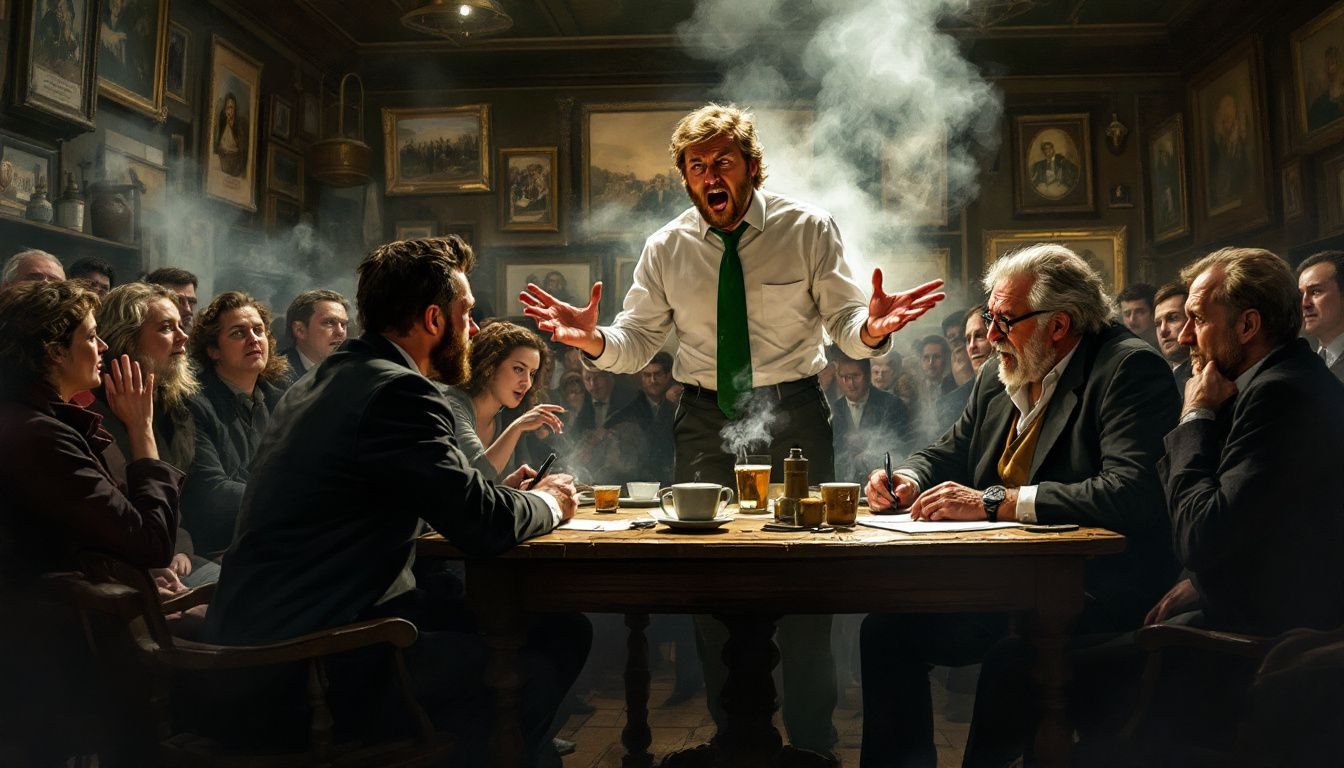
The historical context of Northern Ireland and the Republic of Ireland is essential for understanding their current political, cultural, and economic landscapes. The partition of Ireland in 1921, which created Northern Ireland within the United Kingdom, marked a significant turning point in Irish history. This event laid the foundation for the distinct political systems and identities that exist today.
The partition was a response to the dominant political issue of Irish home rule at the end of the 19th century. Efforts to create a united and independent Ireland faced significant opposition, leading to the establishment of separate home rule territories.
The Northern Ireland Protocol, established post-Brexit, aims to prevent a hard border between Northern Ireland and the Republic of Ireland, reflecting ongoing efforts to maintain peace and cooperation.
The Partition of Ireland
The partition of Ireland in 1921 was a pivotal moment that created Northern Ireland within the United Kingdom and established Southern Ireland as a self-governing entity. The Government of Ireland Act 1920 facilitated this division, responding to the political and religious tensions of the time. Unionist leader Edward Carson advocated for excluding all nine counties of Ulster from the proposed Irish Parliament, reflecting the deep-seated divisions.
The partition resulted in Northern Ireland opting out of the Irish Free State, leading to the establishment of a devolved government. This division created distinct political entities, each with its own governance and identity.
The Catholic, irish nationalist majority in Ireland sought self-government, while the Protestant, unionist majority in Northern Ireland aimed to remain under British rule. These historical events continue to influence the political and cultural landscapes of both regions.
The Troubles and Peace Process
The Troubles, a period of conflict in Northern Ireland lasting approximately 30 years, profoundly impacted the region’s social and political fabric. Events like Bloody Sunday intensified the conflict, highlighting the deep-seated divisions between nationalist and unionist communities. The civil rights campaign in Northern Ireland faced significant opposition from loyalists and hard-line unionist parties, escalating tensions.
The Good Friday Agreement, signed in 1998, marked a significant step towards peace by establishing a power-sharing government. This agreement, ratified by referendums in both Northern Ireland and the Republic of Ireland, aimed to address the political divide and promote cooperation.
However, Brexit has introduced new challenges, potentially destabilizing the region and affecting the peace process established by the Good Friday Agreement.
Travel Considerations
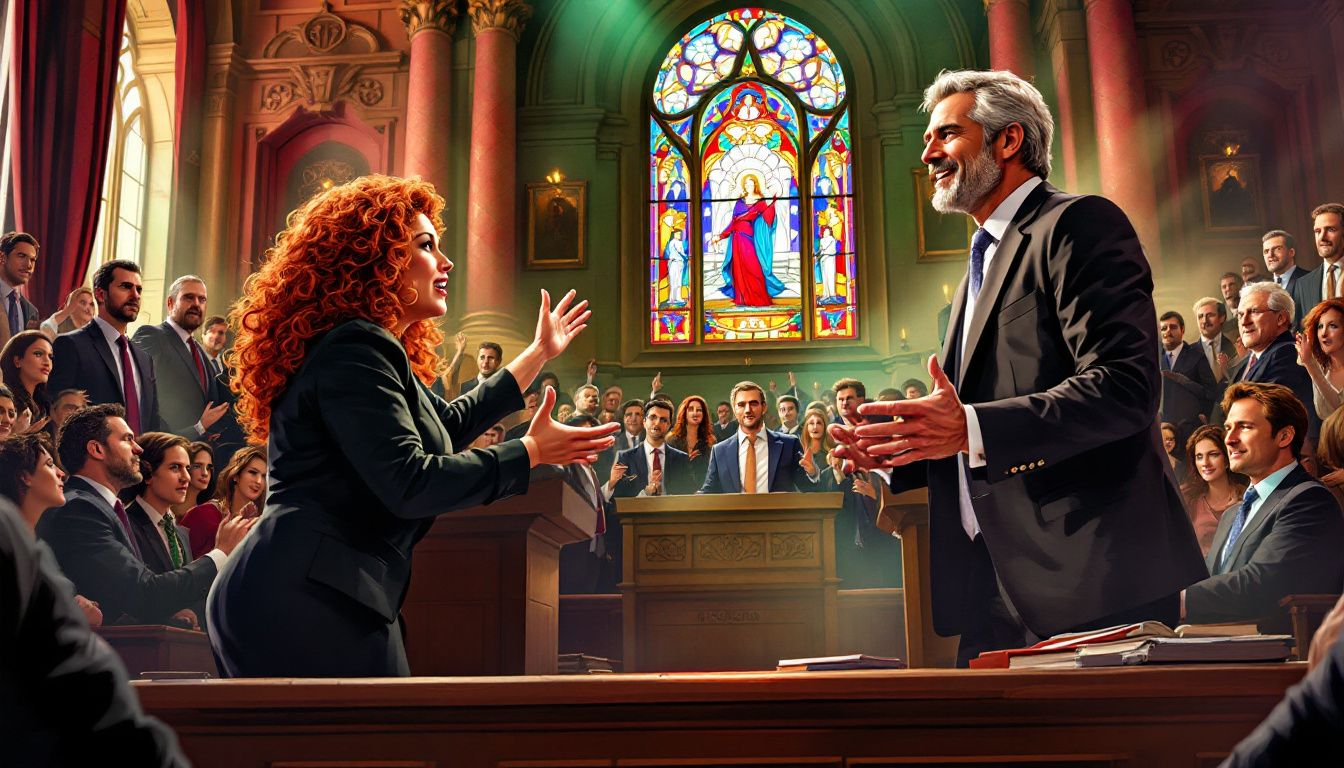
Travel between Northern Ireland and the Republic of Ireland is facilitated by the absence of a physical border, allowing for seamless movement across the regions. This ease of travel is a significant advantage for tourists and residents alike, promoting cultural exchange and economic interaction. The Common Travel Area ensures that passports are not required for travel between the two regions, further enhancing travel convenience.
However, Brexit has raised concerns about the potential hardening of the land border in the future, which could impact travel ease and cross-border activities. Understanding these travel considerations is crucial for anyone planning to visit or navigate between Northern Ireland and the Republic of Ireland.
Additionally, differences in road signs and measurements, such as distances in miles in Northern Ireland and kilometers in the Republic of Ireland, highlight the practical aspects of travel in these regions.
Border Crossings and Travel Ease
The absence of a physical border between Northern Ireland and the Republic of Ireland allows for easy and unrestricted travel. This seamless movement is supported by the Common Travel Area, which eliminates the need for passports and promotes free movement across the regions. This arrangement has been beneficial for both residents and tourists, facilitating cultural and economic exchange.
Despite the current ease of travel, Brexit has introduced uncertainties regarding the future of border crossings. Concerns about the potential re-establishment of a hard border could impact travel ease and disrupt the previously seamless movement. Being aware of these potential changes is important for anyone planning to travel between Northern Ireland and the Republic of Ireland.
Road Signs and Measurements
Road signs and measurements differ between Northern Ireland and the Republic of Ireland, reflecting their distinct systems. In Northern Ireland, road signs display distances in miles, consistent with the UK’s measurement system. This difference can be a point of confusion for travelers accustomed to the metric system used in the Republic of Ireland.
In the Republic of Ireland, road signs use kilometers for distance measurement, aligning with the broader European Union standards. Speed limits are also displayed in kilometers per hour (km/h), contrasting with the miles per hour (mph) used in Northern Ireland.
These differences in road signs and measurements illustrate the practical aspects of travel and the need for travelers to be aware of regional variations.
Symbols and Identity
Symbols play a vital role in expressing national identity and fostering a sense of belonging in both Northern Ireland and the Republic of Ireland. The flags and emblems used in each region represent their unique histories and affiliations. The Republic of Ireland uses the Irish tricolour flag, symbolizing peace and unity among its diverse communities. In contrast, Northern Ireland uses the Union Jack, reflecting its affiliation with the United Kingdom.
National holidays and celebrations further encapsulate the distinct cultural identities of each region. St. Patrick’s Day, celebrated in both Northern Ireland and the Republic of Ireland, showcases shared heritage albeit with differing customs. The Twelfth of July, a significant holiday in Northern Ireland, commemorates the victory of William of Orange and highlights the region’s Protestant identity.
These symbols and celebrations provide a window into the cultural fabric that defines Northern Ireland and the Republic of Ireland.
Flags and Emblems
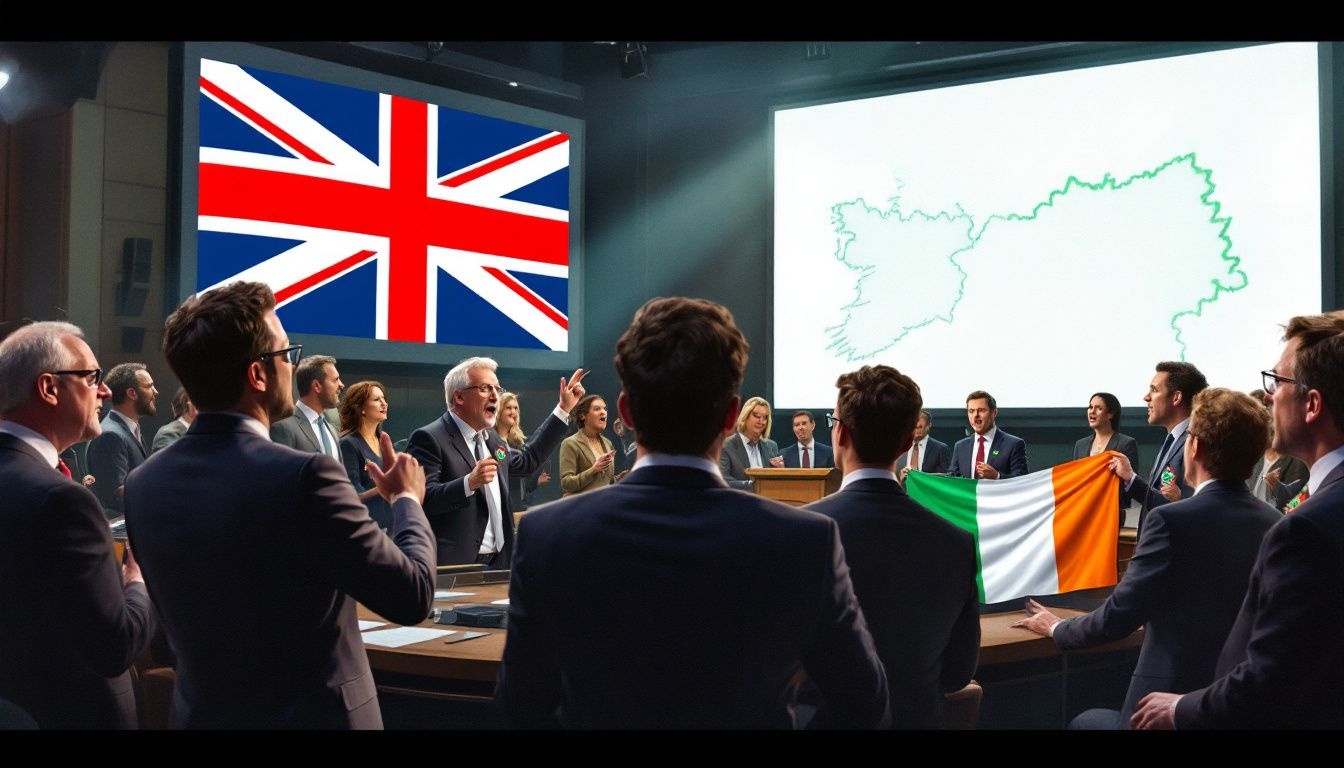
The flags and emblems of Northern Ireland and the Republic of Ireland reflect their distinct national identities. Northern Ireland uses the Union Jack, symbolizing its connection to the United Kingdom and its historical ties to British rule. This flag is a powerful emblem of the region’s political affiliations and cultural heritage.
The Republic of Ireland, on the other hand, proudly flies the Irish tricolour flag, which represents peace and unity among its different communities. This flag, with its green, white, and orange stripes, is a symbol of the nation’s journey towards independence and its commitment to fostering harmony among its people.
These contrasting flags encapsulate the unique identities and political histories of Northern Ireland and the Republic of Ireland.
National Holidays and Celebrations
National holidays and celebrations in Northern Ireland and the Republic of Ireland highlight their distinct cultural identities. St. Patrick’s Day, celebrated on March 17, is a significant holiday in both regions, though customs and festivities may vary. In the Republic of Ireland, the day is marked with parades, music, and festivals nationwide, reflecting its cultural heritage.
Northern Ireland also celebrates St. Patrick’s Day, but it is known for the Twelfth of July, which commemorates the victory of William of Orange at the Battle of the Boyne in 1690. This holiday is unique to Northern Ireland and is celebrated with parades and festivities that underscore its Protestant identity.
These national holidays and celebrations showcase the rich cultural traditions and historical narratives that define Northern Ireland and the Republic of Ireland.
Summary
Understanding the key differences between Northern Ireland and the Republic of Ireland is essential for appreciating the unique identities and cultures that define these regions. From political structures and economic distinctions to cultural symbols and historical contexts, each aspect contributes to the rich tapestry of the Emerald Isle. The political divide, shaped by historical events like the partition of Ireland and The Troubles, continues to influence the governance and societal structures of both regions.
As we navigate the complexities of these differences, it becomes clear that Northern Ireland and the Republic of Ireland, while sharing the same island, have distinct paths that shape their present and future. By exploring these differences, we gain a deeper appreciation for the diverse experiences and identities that make the island of Ireland a fascinating and multifaceted place. Whether you’re planning to visit or simply seeking to understand more about this remarkable island, the insights provided here offer a comprehensive guide to the key distinctions between Northern Ireland and the Republic of Ireland in 2024.
Frequently Asked Questions
What is the main political difference between Northern Ireland and the Republic of Ireland?
The main political difference is that Northern Ireland is part of the United Kingdom with a devolved government, whereas the Republic of Ireland functions as an independent sovereign parliamentary constitutional republic.
Are there any language differences between Northern Ireland and the Republic of Ireland?
There are notable language differences between Northern Ireland and the Republic of Ireland; the Republic recognizes both Irish and English, while Northern Ireland primarily uses English, though there are initiatives to promote the Irish language in specific areas.
How does Brexit affect trade between Northern Ireland and the Republic of Ireland?
Brexit has affected trade between Northern Ireland and the Republic of Ireland by introducing potential barriers and regulatory challenges, despite the Northern Ireland Protocol’s aim to maintain an open border. Uncertainties surrounding these arrangements continue to impact economic activities in the region.
What are the main cultural symbols of Northern Ireland and the Republic of Ireland?
The main cultural symbols of Northern Ireland include the Union Jack, representing its ties to the UK, whereas the Republic of Ireland prominently features the Irish tricolour flag, which symbolizes peace and unity among its communities.
Are there any significant travel considerations between Northern Ireland and the Republic of Ireland?
Traveling between Northern Ireland and the Republic of Ireland is straightforward, thanks to the Common Travel Area allowing free movement without a passport. However, travelers should be mindful of differences in road signs and measurement units.

